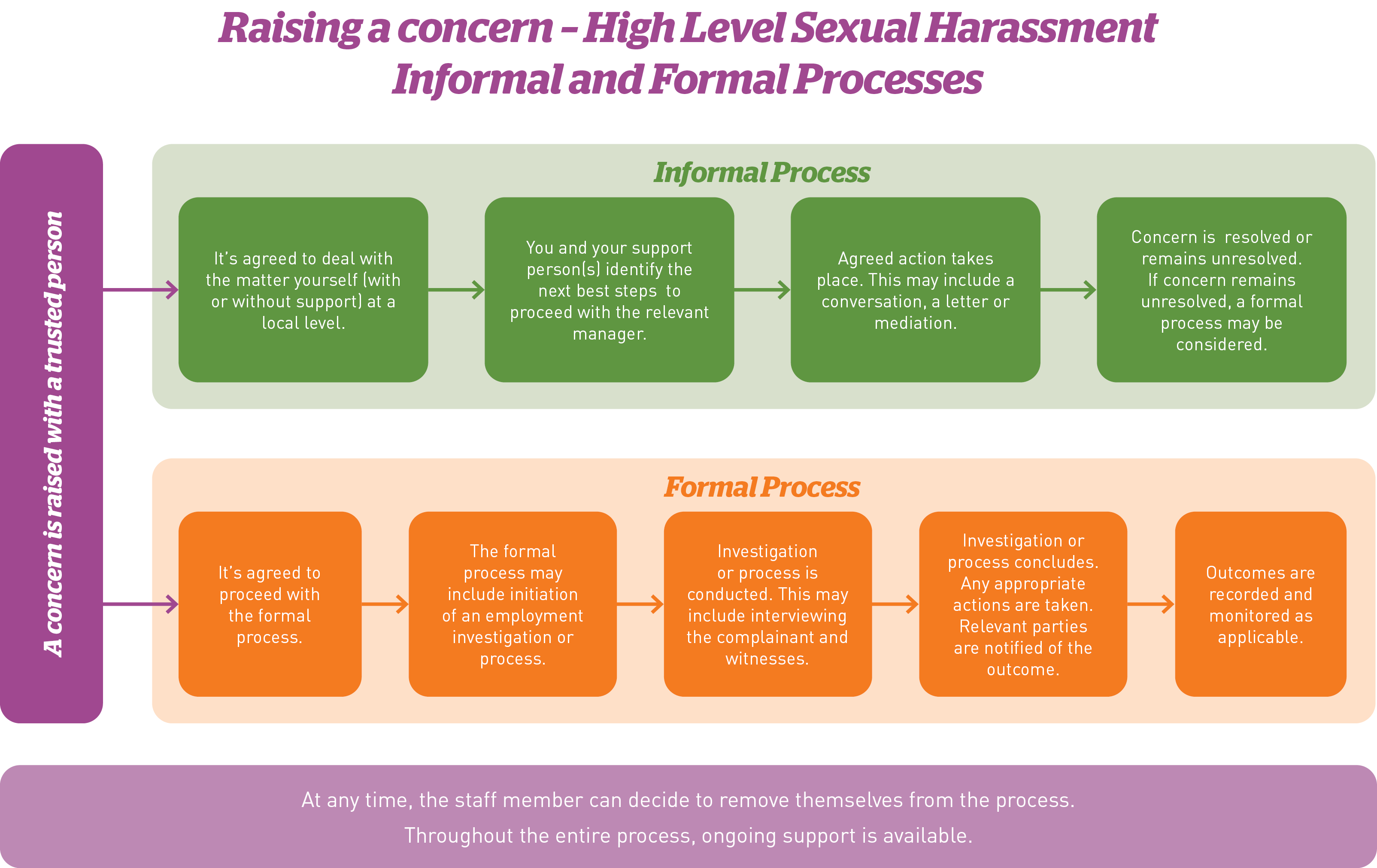Sexual Harassment Review: June Update
June 2025 update - A message to all Corrections staff from Deputy Chief Executive (DCE) People & Capability Rebecca Powell
I’m pleased to provide my first update on our ongoing response to the Sexual Harassment Review as DCE People & Capability. With work now underway on a number of actions, we’ve identified that a significant amount of the effort ahead is more closely aligned with our People & Capability group. Our DCEs for Pae Ora and Organisational Resilience & Safety, Dr Juanita Ryan and Richard Waggott will continue to shape the direction of the work from their membership of the steering committee, chaired by Chief Executive Jeremy Lightfoot.
Following the release of the independent review into Sexual Harassment, we have progressed a range of initial actions aimed at ensuring everyone feels safe – and is safe – while working at Corrections. We know that for many of our people there are gaps in our knowledge and awareness of what sexual harassment is, and how we should respond to it when we witness or become aware of it occurring. Our current area of focus is on developing new ways to deliver staff training on sexual harassment to close this gap in knowledge. Our ultimate goal is the elimination of sexual harassment from our workplaces.
We also want to ensure leaders have access to practical and timely advice on how to respond if a complaint is raised with them. Recently we updated our Sexual Harassment Tātou page, including publishing the diagram below which provides clarity in relation to the informal and formal processes to follow when a concern is raised:

The goal is elimination, and this will take time to achieve. We acknowledge there will still be instances of sexual harassment in our workplaces so the clarity that the diagram above provides is important. We want anyone who may be experiencing sexual harassment to understand broadly what the process will look like. It’s also important for our people leaders to understand the approaches that could be taken. I strongly encourage everyone to take the time to take a look at the Tātou pages and familiarise yourselves with the information available. It’s important to understand that there isn’t always the choice of taking an informal or formal approach, and all concerns raised will require consideration of different factors, with support from our People Services managers. Importantly, we have also collated and published a range of support options for those who need them.
Chief Executive’s video
On 9 May, Jeremy shared a video which clearly outlines his expectations and speaks to the culture we all want to see at Corrections. If you haven’t taken the opportunity to hear from him and reflect on your own alignment to our organisational values, I highly recommend you do.
I want to share an excerpt from the video to highlight the importance of the message.
‘We want to have environments where you can be safe and confident to speak up when you are concerned about a colleague's behaviour. Our focus is to eliminate sexual harassment from our workplace. Whether you are at work or off the clock, if you behave in a way that makes a colleague unsafe then Corrections is not the right place for you. ‘
I want to emphasise what Jeremy has said. Sexual harassment will not be tolerated here in our workplaces. Each one of you deserves to feel safe, heard, and have confidence in our ability to respond to sexual harassment. To strengthen this expectation, we are currently revising our Code of Conduct, which outlines the behaviour expected from all staff, and we will be supporting you to understand the intent of these expectations and are crystal clear on what behaviour is acceptable, and what is not.
Finally, it’s important that you know that we are really are committed to listening to the voices of our people as we continue to shape this significant mahi. A Sexual Harassment Staff Reference Group (SHRG) has been established, and I want to thank the 52 people who have volunteered their time, expertise and experience in helping us to shape the direction we take, check our thinking and consider what more we could do.
Eliminating sexual harassment isn’t the responsibility of any one individual - it’s up to all of us to create the workplaces and culture that we want to see.
Let’s all do our part to make this a reality.

